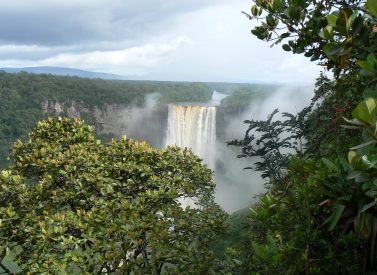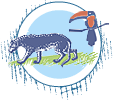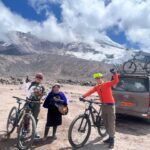
Kaieteur Falls Overland Tour
Travel overland through wildlife-rich rainforest to Guyana’s Kaieteur Falls.
Travel on foot and canoe as you journey to Kaieteur Falls, the world’s highest single-drop waterfall, five times the height of Niagara Falls.
After a city tour, we leave civilisation and enter Guyana’s beautiful rainforest.
Walking along small jungle trails and over tree-trunk bridges gives you a real sense of adventure and allows you to get as close as possible to lush, green nature.
The lucky ones amongst you might even return home having seen a jaguar.
More on Kaieteur Falls tour
Passing the Kaieteur Gorge, with towering mountains on either side, there is plenty to see, and a refreshing dip in the river awaits.
The highlight awaits as you reach the base of Kaieteur Falls. After you have successfully scrambled all the way to the top you are stunned by the views.
You have stumbled across a real hidden gem, and thanks to that, you might even be the only people there. If you are patient enough, you may spot the golden frog or the brightly coloured Cock-of-the-Rock.
At night, you camp at scenic campsites in beautiful locations and will fall asleep to the sounds of the jungle by night – a truly unforgettable experience. Remember to check our other Guyana tours.
Facts about Kaieteur Falls
- Kaieteur Falls is the largest single-drop waterfall in the world (482m/1,581ft) and is 90-105m/300-350ft wide.
- It is one of nine waterfalls along the Potaro River.
- The Falls are within the Kaieteur National Park, an area famous for its pristine Amazon rainforest.
- Kaieteur Falls’ waters are brown because of the eroded sediment carried down the Potaro River.
- There is a sacred cave hidden behind the white wall of rushing water at Kaieteur.
- British geologist C. Barrington Brown became the first European to see Kaieteaur Falls in 1870.
- The power of Kaieteur Falls has eroded a five-mile (8km) gorge.
Trip Highlights
Print Share Download as PDF-
Intrepid trek through virgin rainforest on trails known by very few.
-
Swim across creeks and cross rivers on jungle bridges.
-
Challenging climb to reach your first viewpoint of the famous Kaieteur Falls.
-
One of the rainforest's most rewarding trails.
Overall I thought the guides everywhere were fantastic.
A. Thomson, Guyana Highights
Full Itinerary
Day 1: Arrive in Guyana. Georgetown, transfer to hotel
Arrival in Georgetown.
Pick up and transfer to Cara Lodge, a 150-year-old heritage building converted into a beautiful small hotel.
Day 2: City tour, hotel (B)
Georgetown the chief port, capital and largest city of Guyana is situated on the right Bank of the Demerara River Estuary.
It was chosen as a site for a fort to guard the early Dutch settlements of the Demerara River. The city of Georgetown was designed largely by the Dutch and is laid out in a rectangular pattern with wide tree lined avenues and irrigation canals that criss-cross the city.
Most of the buildings in the city are wooden with unique architecture dating back to the 18th and 19th centuries.
Guyana City Tour
Day 3: 4x4 and canoe to Amatuk Falls, camp (B,L,D)
It is an early start as you depart Georgetown at 6.30am for an 8 hour journey inland. Once past the town of Linden, you see nothing but beautiful verdant rainforest and rolling hills.
You will reach the busy gold-mining town of Mahdia, and on to Pamela Landing.
This is where you meet the boat for a final 2 ½ hours journey to Amatuk, a beautiful island of white sand. The stunning 50m high Amatuk Falls are close to the camp where we set up for the night.
The river is suitable for swimming and what better way to freshen up before dinner!
Overnight in hammocks at Camp Amatuk.
Day 4: Boat trip to Waratuk Falls, camp (B,L,D)
Today, you set off on foot as adventure awaits, with some swimming across creeks and walking across jungle bridges (tree trunks)!
A short boat-ride and you arrive at Waratuk where you will either trek for 4hrs if you like a bit more challenge, or transfer to another boat for an hour’s boat ride to Tukiet.
The impressive Ibini mountain range towers over you as you make your way to Tukiet, which lies at the foot of the Kaieteur Falls.
Here, you will be treated to a stunning view of the gorge and – you guessed it – a possible dip in the river.
Overnight at Tukiet Guesthouse in hammocks.
Day 5: Hike to Tukiet and Kaieteur, guest house (B,L,D)
Today get ready for the big challenge! It’s a four hour climb to the top of what (at least in part) the locals call the ‘O my God’ mountain. Did you say you liked challenges?
There is some scrambling involved to reach the top, but the sense of achievement on taking in that view from the top, will make up for all hardship.
Here you have arrived at the mighty Kaieteur Falls, the highest single-drop waterfalls in the world.
Overnight at Kaieteur Guest House, in hammocks.
Day 6: Kaieteur Falls, guest house (B,L,D)
This morning explore Kaieteur Park and of course take advantage of the many excellent photo opportunities, too.
Those with a bit of patience might get a glimpse of the beautiful but poisonous ‘golden frog’ and hopefully you will spot the brightly coloured, orange ‘Cock-of-the-rock’.
Your guide will help you spot as much as possible and draw attention to the unique flora around.
Overnight at Kaieteur Guest House, in hammocks.
Day 7: Return to Georgetown, hotel (B,L)
After another night at the top of the Kaieteur, it is time to say farewell.
Return on a small aircraft and hope to get a final, farewell view of the Kaieteur Falls from the air – saying goodbye to the gorge you camped at only a few nights ago and the awe-inspiring expanse of rainforest and rivers.
Overnight at Cara Lodge.
Optional (at extra cost) evening tour.
Georgetown’s Seawall comes alive as families, courting couples and friends promenade along the oceanfront every Sunday evening.
There is a variety of unique pop-up cocktail bars, street food stalls and all to the backdrop of Caribbean tunes. It’s an atmosphere not to be missed and your guide, who knows all the best places, will make sure you taste the best street food as well as visiting other local bars around the city.
Day 8: Transfer out (B)
After breakfast, transfer to the airport for your return flight home.
Prices From $2,060 / £1,675 per person
What's Included?
Hotels, guest houses, camp, all meals on trek, transport throughout and to and from Georgetown airport, camping equipment, local guide.
What's Not Included?
International flights – we can arrange these for you, tips, sleeping bag, porters (can be hired), airport departure tax, personal items, towels, alcoholic drinks.
Accommodation
Being mainly rainforest, and because much of the trip takes place in the rainforest, you will sleep in beds surrounded by mosquito nets.
Sleeping within the rainforest and savannah is a fantastic experience, and comes as second nature after a day or two.
While no one comes to Guyana looking for a luxury travel experience, welcome creature comforts are on offer at the charming colonial boutique Cara Lodge in Georgetown as well as the storied Pegasus on the city’s northwest corner.
Tour Staff
A variety of expert guides may accompany on this tour, all of whom have many years’ experience and plenty of enthusiasm to make sure your trip is a great one.
Below are a few of the guides.
Wally Prince: Unrivalled expertise and experience leading tours and teams in Guyana.
Wally is one of the most sought-after guides for professional birders, documentary teams, and scientific expeditions visiting Guyana. He served for seven years as the guide coordinator, resident wildlife biologist, chief trainer, and operations manager at Iwokrama International Centre for Rainforest Conservation and Development. He has identified more than 700 of the 800+ bird species recorded in Guyana and is intimately familiar with their habitats, behaviours, vocalisations, and mating rituals. He grew up wandering through Guyana’s lush and biodiverse interior.
Gary Sway: Amerindian, Expert Naturalist
Gary Sway is a Macushi Amerindian from the village of Surama. Having grown up in the rainforest he has a great understanding and affinity for his natural surroundings and the wildlife. He has been a guide at Surama Eco-lodge for nearly 15 years and is well loved by those who have explored and seen the rainforest through his eyes. Gary is also an experienced birding guide and has represented Guyana at the Bird Expo in Columbus Ohio, USA. His patience and keen eye means great rewards for those birding with him. In his spare time Gary is a leading player in the Surama Makushi culture group.
Nadir (Carlos) Allie: Guide, Bird Expert
Nadir (Carlos) Allie was originally from the west coast of the ancient county of Berbice. His family were rice farmers, but Carlos did not want to follow this path, and moved to Georgetown to learn his father’s profession and became a tailor. From an early age Carlos always had a love and passion for birds. He never joined the other boys in trying to shoot them with a slingshot, preferring to rescue and care for the injured ones.
In Georgetown, through his love of birds he became friends with Andy Narine and together they formed the Guyana Amazon Tropical Birds Society (GATBS). Through GATBS, Carlos was able to get involved in many different projects including bird counts for some of the interior lodges, and also collecting information on the avifauna of Guyana for a new Guyana bird list. Over the years Carlos has become an experienced bird guide, leading tours to Guyana’s top birding locations especially along the coastlands where he was born and continues to live. Carlos loves to share his passion and love of birds with visitors and locals whenever he gets the opportunity. He is especially fond of leading tours of the Botanical Gardens in Georgetown.
Meals
Almost all dietary requirements can be catered for – please enquire in advance as we have to organise supplied.
Whilst on tour the food is of a very good standard with fresh beef, chicken and fish and plenty of vegetables and fruit.
On camping trips/in remote areas, use is made of dried and salted produce, supplemented by fishing.
The blend of different ethnic influences – Indian, African, Chinese, Creole, English, Portuguese, Amerindian, North American – gives a distinctive flavour to Guyanese cuisine.
Try dishes such as Pepper Pot, meat cooked in casareep (bitter casava) juice with peppers and herbs. Garlic pork, a specialty at Christmas. Curry and Roti is popular everywhere. Seafood is plentiful and varied, as is the wide variety of tropical fruit and vegetables. Try casava and yams.
Rum is the most popular drink and Guyana blends some of the worlds best. There are many inexpensive rums that are an excellent rum with mixers. The better rums such as Banks Extra, Banks XM 10 Year and DDL’s 12 year old King of Diamonds are smooth rums and great straight or on the rocks. DDL’s 15 year old El Dorado was voted the best rum in the world in 1999, 2000 and 2001, and is as smooth as a good brandy. The local Banks Beer is a good beer.
The water from the tap is brownish in colour, which is from the tannin in the water, and not polluted. However, it is recommended that bottled water, which is readily available, is used for drinking. Remember to drink plenty of it to prevent dehydration as it does get humid in Guyana.
Activity Level
This has been classified as an easy-to-moderate trek and is more like an overland tour.
You need a reasonable level of walking fitness to hike to Kaieteur Falls. The climb up from the Gorge to the top of the Falls is a hot and hard one, which will take 4-6 hours, depending on the weather and your fitness levels. Most days, you will walk for a few hours, spot birds, and search for wildlife.
The humidity can make a short walk feel a lot harder than it is, and take on board lots of water.
The trip is open to anyone who wants to experience the rainforest, but particularly for those with an interest in hiking and wildlife.
Practical Information
Introduction to Guyana
Guyana is the only English-speaking country on the South American continent and has a Caribbean feel.
It is a destination for the nature lover looking for an off-the-beaten-path destination with many attractions. Guyana offers pristine rainforest, abundant wildlife, jaguars and the mighty Kaieteur Falls.
Start your adventure in the melting pot that is the country’s capital – Georgetown. Here Hindu, Muslim and Christian cultures blend in harmony.
Head off to visit the breathtaking Kaieteur Falls – the world’s highest single-drop waterfall.
Then the interior beckons. Jungle and Savannah await. With luck you might spot the Cock o’ the rock or a harpy eagle.
Bigger mammals such as the ant eater might surprise you or if incredibly lucky the mighty jaguar. Travel by road or river and stay in rustic but comfortable lodges – all with an authentic Guyanese welcome.
Guyana will be an unforgettable adventure.
Geography of Guyana
Guyana has five natural habitats to discover, the most famous of which is is its dense rain forest.
This ‘jungle’ is also known as the Forested Highland Region and is in the south of the country, and is very sparsely populated.
The majority (around 90%) of Guyana’s population lives in a marshy plain on the Atlantic coast, known as the low coastal plain.
Most of the country’s mineral deposits (bauxite, gold, diamonds) are found a little further inshore in that is called the white sand belt.
The south west of the country gives way to a desert savannah which then becomes an interior savannah.
From here, the grasslands and mountains of the interior highlands start to rise towards the borders with Brazil and Venezuela.
This is the largest of Guyana’s geographical areas and consists a series of plateaus, flat-topped mountains, and savannahs.
The Pakaraima Mountains dominate the western part of the interior highlands and include Mount Roraima, Guyana’s highest peak at 2,772m (9,094 ft) on the Venezuelan border.
The largest expanse of grassland, the Rupununi Savannah, covers about 15,000 square kilometres in southern Guyana.
Guyana has three large rivers, the Essequibo at 1,010km(628 miles), the Courantyne River (which forms a natural border with Suriname) at 724kms (450 miles), and the Berbice – 595kms (370 miles).
Weather in Guyana
Guyana is a hot and humid country. February and March are prime times to visit, along with Aug-Jan. Read our guide to Guyana’s weather for more.
The mean shade temperature is 27°C, while maximum is 31°C and the minimum is 24°C. The heat is greatly tempered by cooling breezes from the sea.
There are two wet seasons in the north of the country, from May to June, and from December to January.
The south and the Rupununi region receive one wet season from May to July.
All wet seasons may extend into months either side.
Rainfall averages 2,300 mm a year in Georgetown.
Kit list
Good kit is vital for every trip.
Book with Andean Trails and get 15% off Páramo’s fantastic ethical and high performance outdoor gear.
Overview
Guyana is a hot and humid country.
Take sunscreen, sun glasses and a hat to Guyana.
It can rain at any time, so always have a poncho/waterproof jacket handy.
Give plenty of thought to kit selection, and try to keep weight down.
Passenger/s traveling on internal flights in Guyana are allowed a free baggage allowance of 20lbs/9.1KG exceeding this weight passenger/s will incur a cost of GY$150.00 (price subject to change) equivalent to US$ 0.77cents per pound. Please note that additional baggage allowance is subject to availability and cannot be confirmed until day/time of check-in by the airline. We can book excess weight on your behalf but it is subject to being within the payload of the aircraft and at the discretion of the airline. We understand you may want more than 20lbs/9.1KG of baggage and wish to have guaranteed excess baggage/weight and so an alternative is to pre-book an extra seat on the flight which will afford you 175lbs/79.4KG for you to use individually or for your group.
Below is a more detailed guide.
Detailed kit list
- Good binoculars.
- Camera and film / memory cards (take at least twice the amount you think you will need!).
- Tight-weave, light weight long trousers.
- Quick dry socks.
- Rain suit or long poncho (100% waterproof – test before you leave home).
- Long-sleeved tight-weave shirts.
- T-shirts.
- Water bottle (2 litres approx.) & purification tablets.
- Sun cream (high factor, min. 30+) and lip salve.
- A broad-brimmed hat that will not come off on windy boat-rides.
- Shorts.
- A warm jumper – it can feel cold on some boat journeys.
- Sunglasses with UV filter.
- A pair of trainers/teva sandals.
- Ankle high hiking boots.
- Insect repellent.
- The original and a photocopy of your passport.
- Yellow fever inoculation certificate.
- A large, bright head torch, spare batteries and bulb.
- Cash (small denomination bills, USD or GBP sterling) for souvenirs at the lodge, alcoholic beverages, etc.
- Daypack (at least 30 litres). Comfortable and with waterproof lining or cover.
- Personal first-aid kit to include: painkillers, plasters (band-aids), moleskin, antibiotic cream, general antibiotics (ask your GP), after-bite (tiger balm), anti-diarrhoea tablets, throat lozenges, re-hydration salts & personal medication.
- Towel & wash-kit.
- Wet Wipes/antiseptic hand-wash cream.
- Head-lamp (plus spare bulb and batteries).
- Penknife.
- Travel alarm clock.
- Plastic bags – ‘Zip-loc’ & tough bin liners.
- Book, e-book, mp3 player/ipod or other to help pass the time.
- Extra snacks i.e. cereal bars or favourite chocolate bars.
Miscellaneous others
- Money belt.
- Passport.
- U.S. dollars / GBP sterling cash, mixed-denomination notes, undamaged and unmarked.
- ATM cash/credit card.
- Any inoculation certificates.
- Personal & medical insurance certificates.
- Presents e.g. Postcards from home.
- Comfortable clothes for travel, smart clothes for Georgetown
ATOL holiday protection
Andean Trails has 25 years of experience of putting together the best South America holidays.
We pay a fee to the CAA for every licensable passenger we book since we hold an Air Travel Organiser’s Licence granted by the Civil Aviation Authority. In the unlikely event of our insolvency, the CAA will ensure that you are not stranded abroad and will arrange to refund any money you have paid to us for an advance booking.
We also offer ATOL (Civil Aviation Authority) protected holidays to give our customers peace of mind when booking and travelling.
When you buy an ATOL protected air holiday package from Andean Trails Ltd you will receive a Confirmation Invoice from us confirming your arrangements and your protection under our Air Travel Organiser’s Licence number 6275.
You can read more about ATOL, who is covered and what protections you have if not ATOL-covered, on our ATOL page.
What is ATOL?
The CAA’s ATOL scheme offers protection to your money and your holiday if you book with us. Not everybody is covered (see ‘Who is covered?’ for more), as you must purchase an ‘air package holiday’ with Andean Trails to be protected.
And ‘air package holiday’ is defined as including a flight and some ground services (hotel, transfer, trek etc). This is also known as an ‘ATOL-protected holiday’.
Who is covered?
To be covered by ATOL, you must book a flight and some ground services with us and be from the UK. If you are from the UK and only book ground services and no flights, you are not covered by ATOL (see below for more on how non-ATOL clients are covered).
If you are outside the UK and buy flights with us, you will be ATOL protected IF any of the flights booked with Andean Trails touches/stops in the UK at any point during your holiday package booked with us.
If you buy your flights elsewhere, please check with that agent if you are ATOL protected. Be careful with online flight purchases and make sure you know what protection you have, if any, before paying for flights.
Not all holiday or travel services offered and sold by us will be protected by the ATOL scheme. Please ask us to confirm what protection may apply to your booking.
For land only holidays not involving any air travel, in accordance with “The Package Travel, Package Holidays and Package Tours Regulations 1992”, all UK passengers booking with Andean Trails Ltd. are fully protected for the initial deposit and subsequently the balance of all money paid to us, arising from cancellation or curtailment of travel arrangements due to the insolvency of Andean Trails.
I’m not ATOL covered, what protection do I have?
If you are not ATOL covered, any payments you make to us go to a Trust account.
We can only access this money once your tour has been completed, meaning that if anything happens to Andean Trails Limited while you are on holiday, then your money is secure and you can either complete the trip or be able to make it home.
If you pay for your holiday with a credit card, some offer payment protection – please check with your cardholder.
You also should have cancellation protection written into your insurance (which we recommend you have at the time of booking) in case you need to cancel.
Atta rainforest lodge, Guyana
Get up into the trees like monkeys at Atta Lodge, for some up close and personal wildlife viewing.
The major attraction here is a 154m/505ft long canopy walkway, with four platforms some up to 30m into the canopy.
An array of birds and animals you struggle to see from the forest floor soon zoom into view.
Among these are endangered and protected species such as the jaguar, the bullet wood tree, greenheart and the waramadan (endemic in Guyana only to the Iwokrama Forest).
The lodge provides comfortable accommodation with 8 private rooms, three home-cooked meals per day, and ample opportunities to explore the surrounding rainforest by foot, canoe, or 4X4.
Caiman House, Guyana
You’ll need to keep quiet in your kayak as you help researchers from Caiman House search and tag black caiman at night time.
By staying here, you’ll get an inside look at the work of those trying to protect this endangered species.
You can help to collect the data of any captured caiman – some reaching up to 12 feet in length! – before they are released back into the wild.
Caiman House is once-in-a-lifetime and thrilling part to any tour of Guyana, especially for wildlife enthusiasts who can also look out for snakes, frogs, bird spiders and more
Georgetown, Guyana
The Atlantic gateway to Guyana, Georgetown is a fascinating mix of people, history fusions.
The ex-British colony contains influences from Amerindians, Asia, Brazil and more, making it a lively and welcoming destination.
The Natural History Museum is well worth a visit, as well as the world’s largest wooden cathedral and the thrumming market.
English is widely spoken and friendly local people are normally up for a chat about the unique atmosphere of Georgetown.
Iwokrama Field Station , Guyana
Deep into Guyana’s enormous rainforest lies Iwokrama, a one million acre wilderness full of wildlife.
Birds, trees frogs and the elusive puma live in the forests, whose verdant canopy you can enjoy from the Turtle Mountain vantage point.
The area is protected and known as Iwokrama International Centre for Rainforest Conservation, with the full involvement of the local people.
You can see their history in the Amerindian petroglyphs close to some rivers, a fascinating insight into how animals and humans have coexisted for centuries in this pristine rainforest.
Kaieteur Falls, Guyana
Flying over the jungle canopy, the views confirm that there are no other falls in the world with the magnitude of the sheer drop existing at Kaieteur.
Being so remote, you can walk right up to the flowing water, which gushes 822 feet into a deep and forested gorge.
Look for Golden frogs, unique to a tiny area, living in bromeliads growing in the warm, humid air.
Most likely your group will be the only souls in this remote location, adding to its incredible appeal.
Karanambu Ranch, Guyana
Famous for rescuing orphaned giant river otters, Karanambu also represents the spirit of travel of old.
An outpost, miles from civilisation, there’s a warm welcome and great wildlife.
See the giant Victoria Regis water lily bloom at dusk, or cruise the river looking for giant otters and caiman.
If you wake early enough, you may be able to find a giant anteater snaffling around for a treat.
Sadly, Diane McTurk is no longer with us, but the ranch continues to write its own chapters in the history of conservation.
Roraima Mountains, Guyana
Rumoured to have inspired parts of Conan Doyle’s Lost World book, ‘Tepuys’, or table top mountains, after visiting, it’s easy to see why.
From the sabanna that links Guyana’s western front with Venuzuela, the Tepuys rise dramatically.
They provide unique eco-zones for many species and the lunar-like surface is home to species found nowhere else on earth.
Waterfalls, rapids and rainforest criss-cross the various faces and sections of the Tepuys, making Mount Roraima one of the most acclaimed sights in South America.
Prices From $2,060 / £1,675 per person
2025 guide price based on trek based on group of 4.
Private trek departures, we can open dates anytime.
USD 3,280per person based on a group of 2.
Price reduces with more trekkers.

Dates & Prices
Prices From $2,060 / £1,675 per person
2025 guide price based on trek based on group of 4.
Private trek departures, we can open dates anytime.
USD 3,280per person based on a group of 2.
Price reduces with more trekkers.
Can’t find what you’re looking for? Get in Touch
+44 (0)131 378 5593
+44 (0)131 554 6025



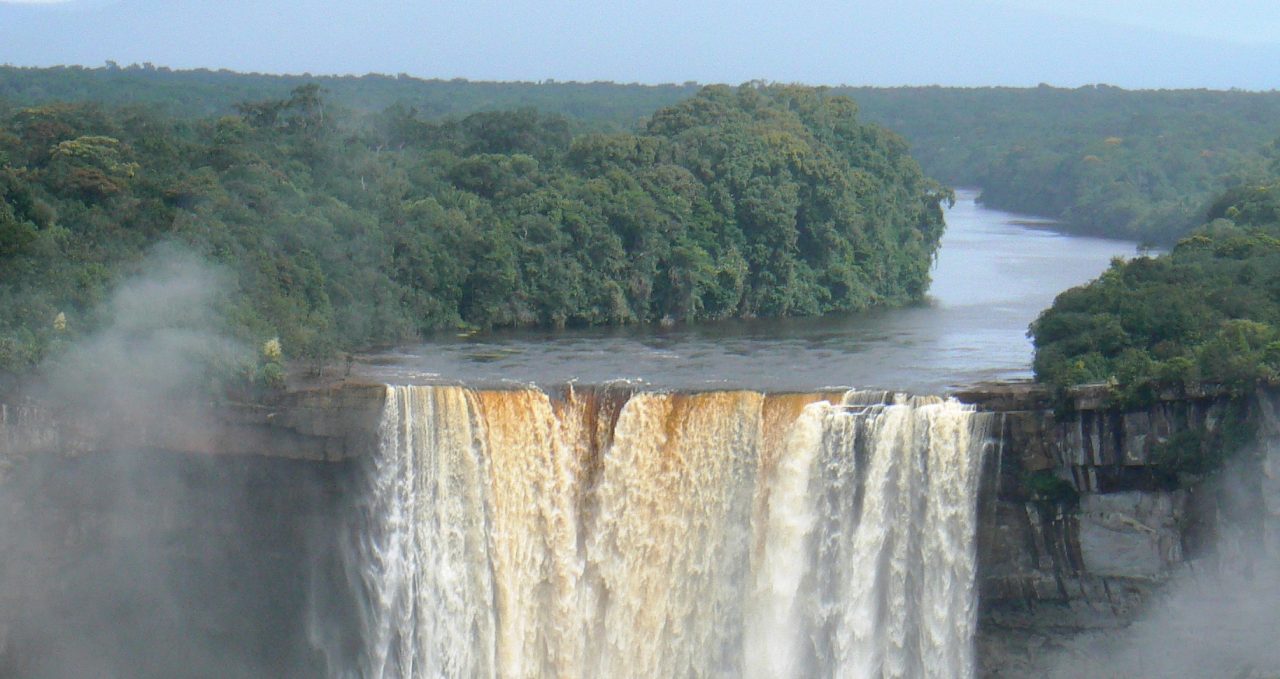
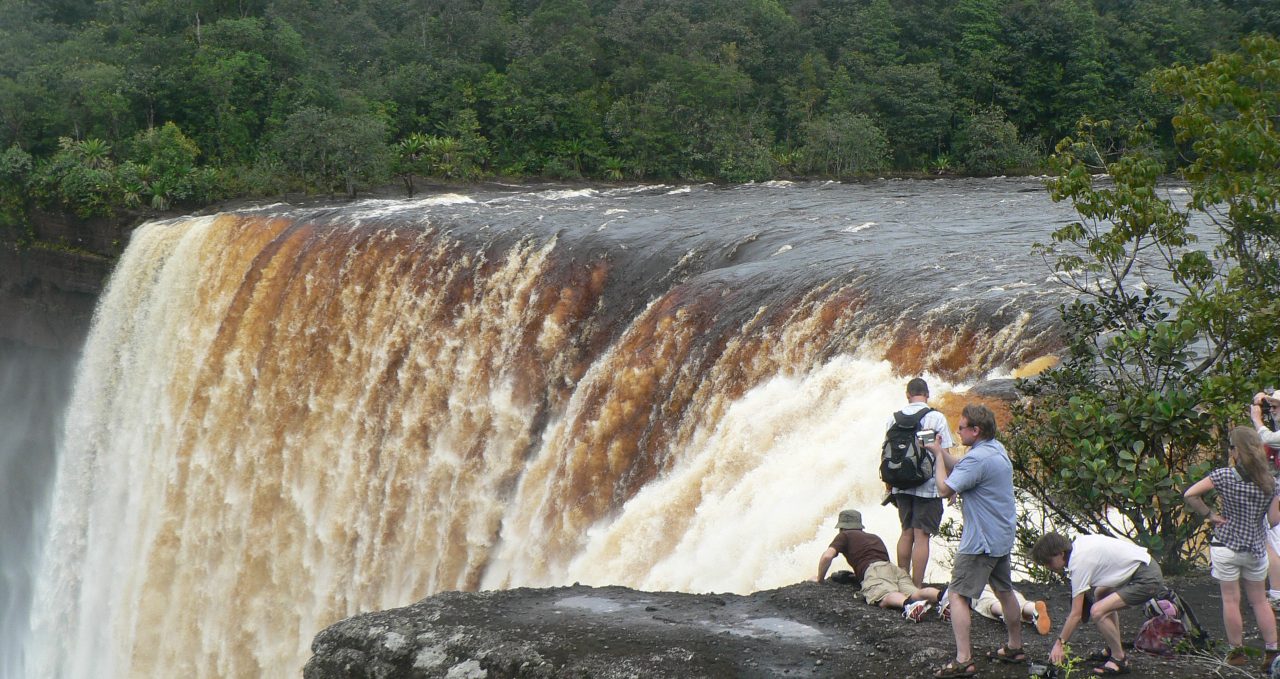
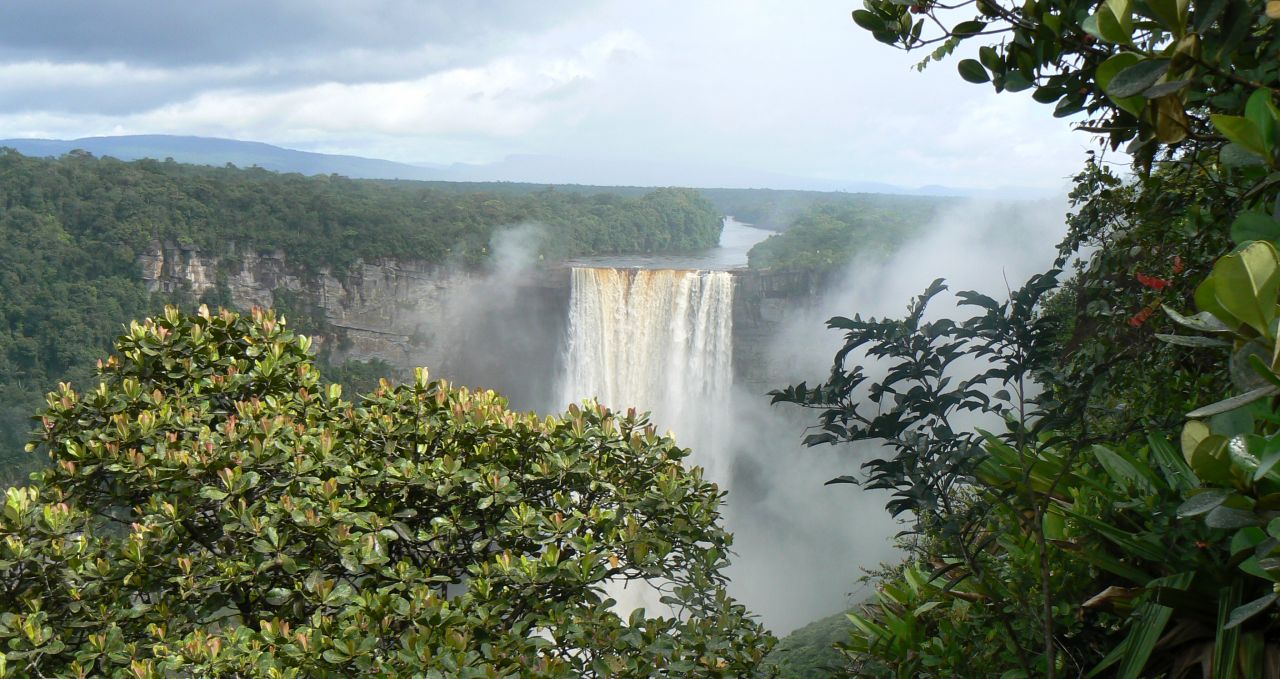
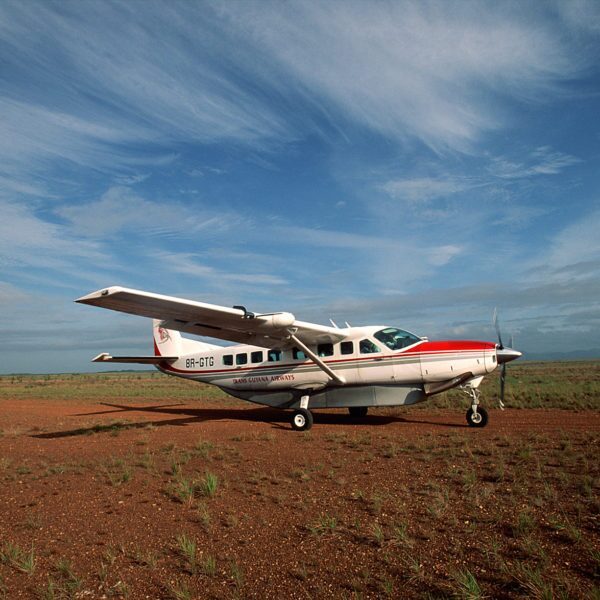
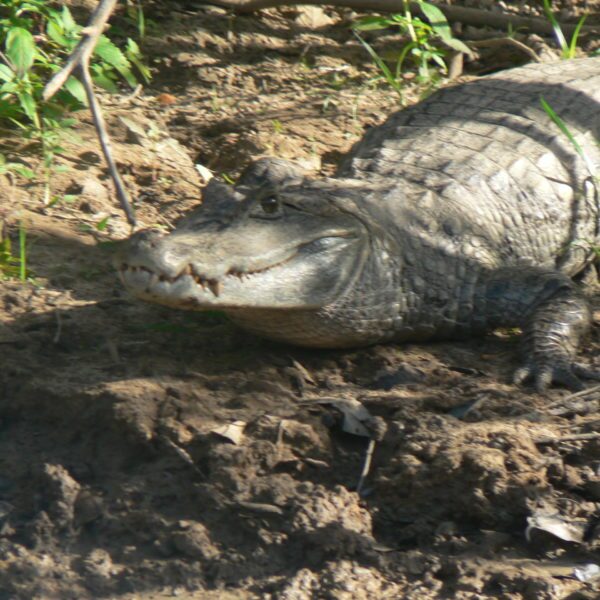
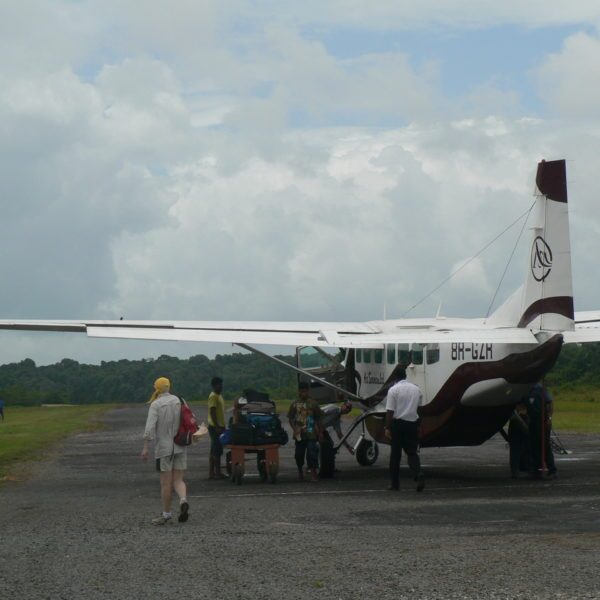
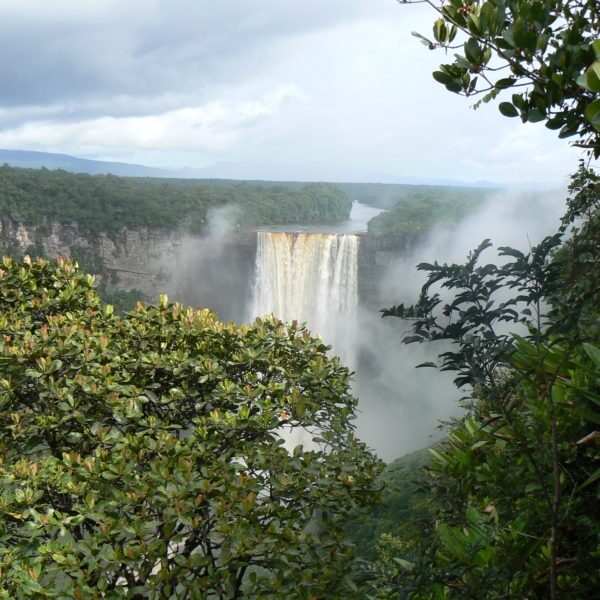
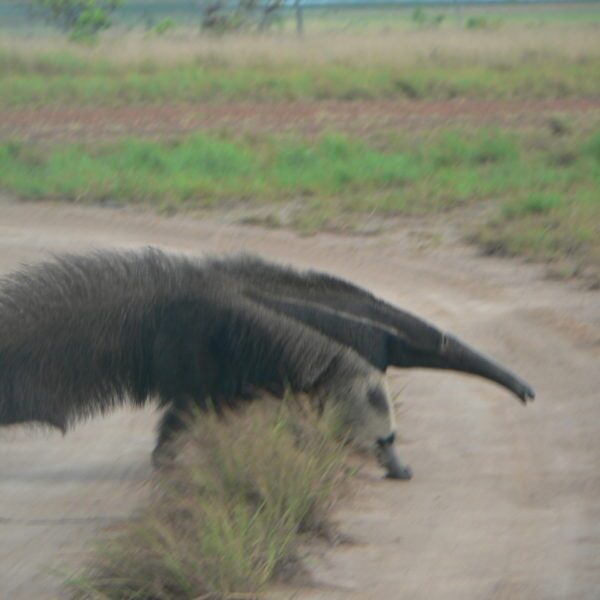
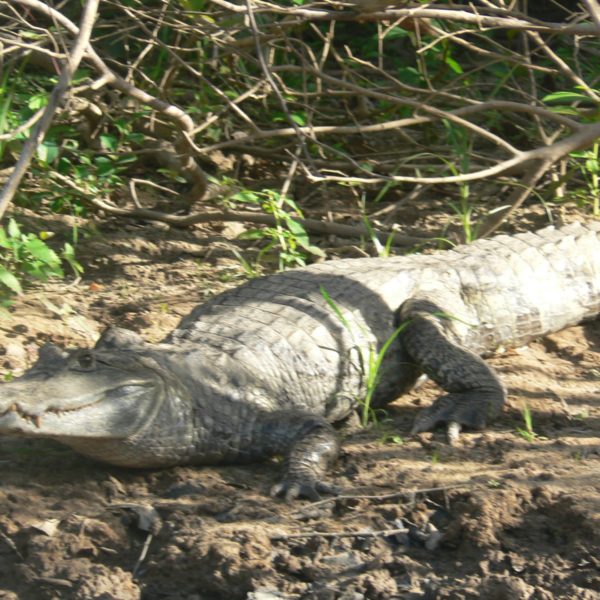
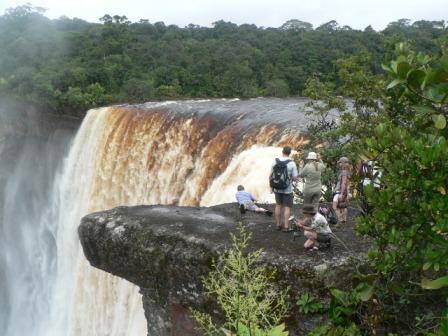
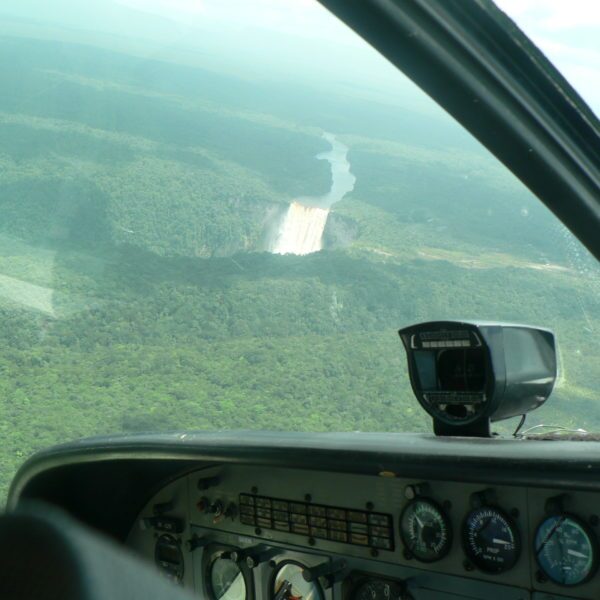
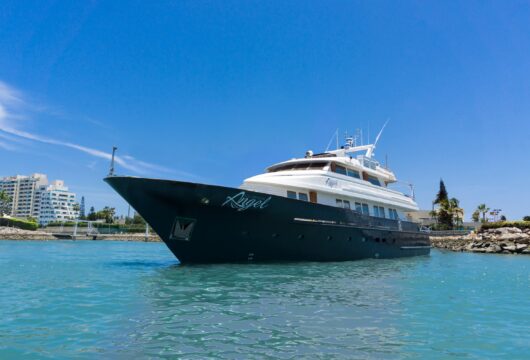
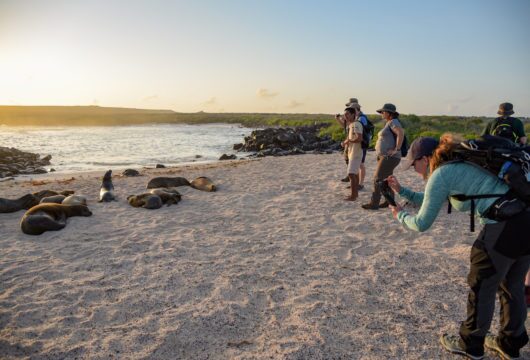
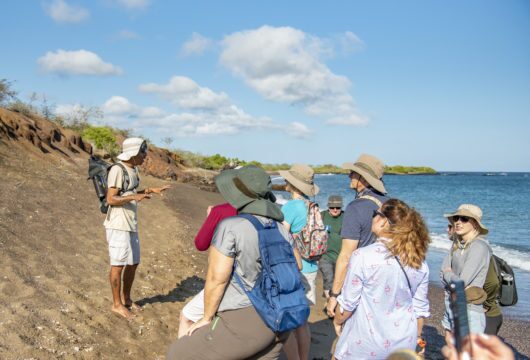
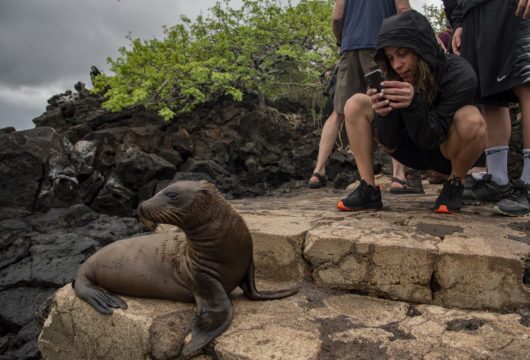
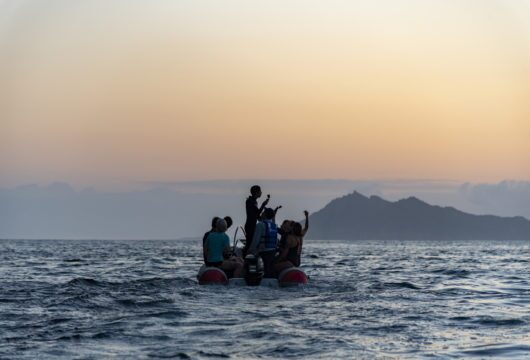
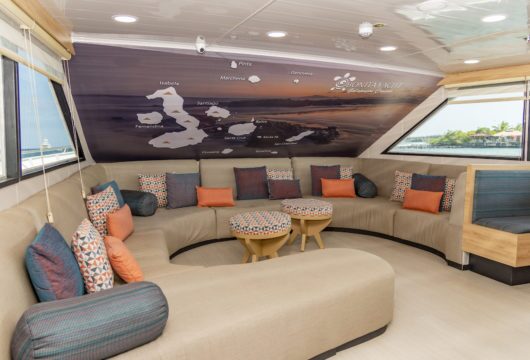
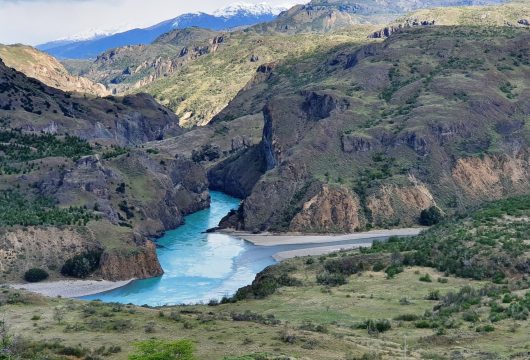
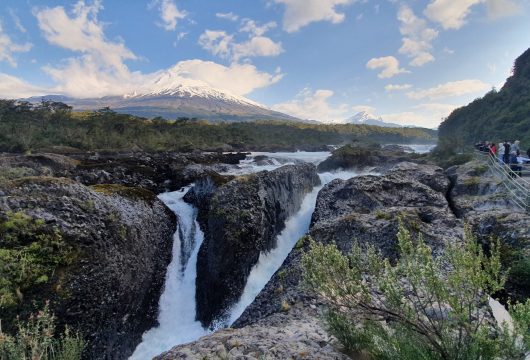
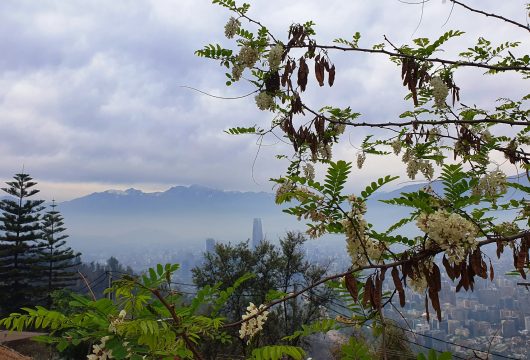
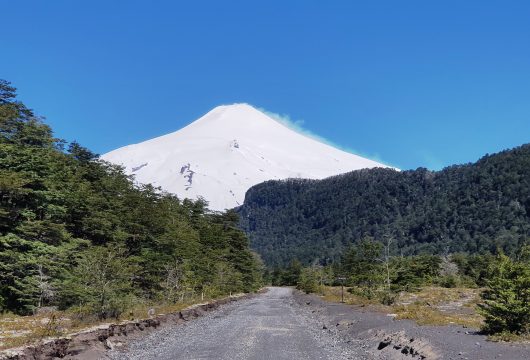
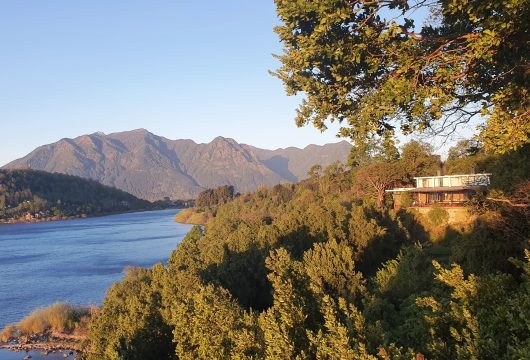
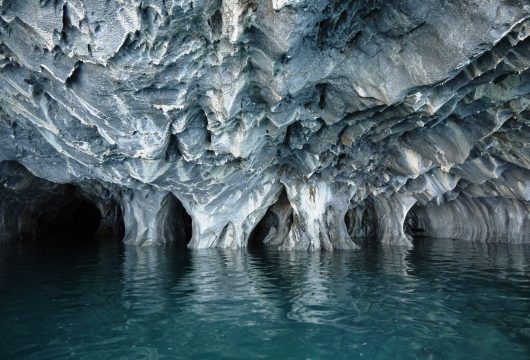
 a Group Tour
a Group Tour  a Tailor Made Tour
a Tailor Made Tour 